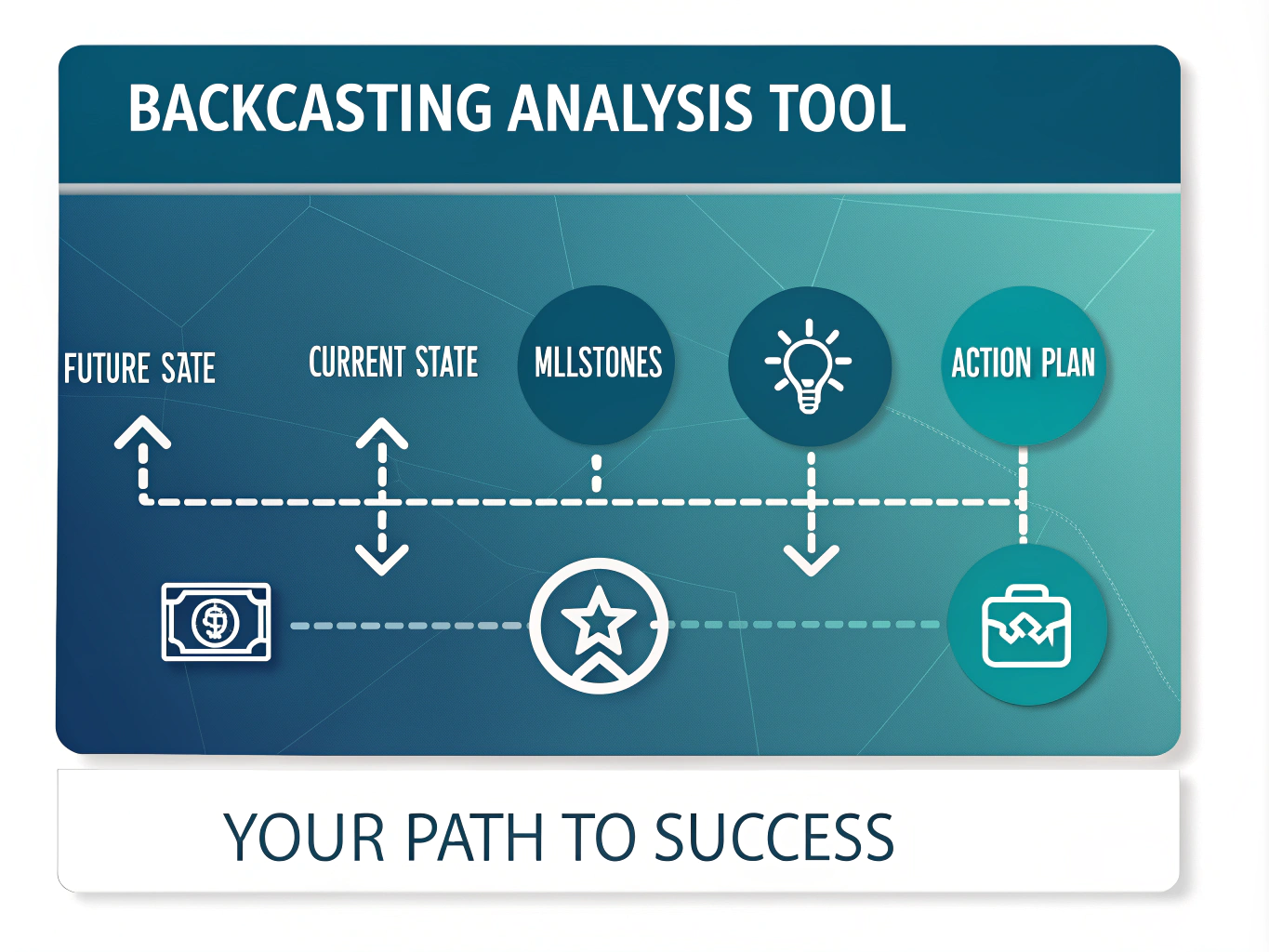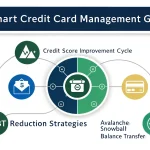Backcasting Analysis Tool
Is this tool helpful?
How to Use the Backcasting Analysis Tool Effectively
The Backcasting Analysis Tool helps you create a clear roadmap to achieve your long-term goals by working backward from your desired future state. Below is a step-by-step guide to filling each input field with relevant, detailed information.
Input Field Instructions
-
Desired Future State Description: Describe your specific vision and measurable outcomes with clarity.
Sample 1: “In 6 years, I plan to own a chain of five eco-conscious cafes across the U.S., earning $3M annually and engaging 40 staff members.”
Sample 2: “By 2030, I will be a published author with three bestselling novels, speaking regularly at international literary events.” -
Current Situation Description: Detail your present status, resources, and challenges you face today.
Sample 1: “I currently manage a small local coffee shop, have a team of 5, and a yearly revenue of $200K with limited marketing experience.”
Sample 2: “I’m a freelance writer with several published articles, basic social media presence, and a steady but modest client base.” - Timeframe (years): Specify the number of years you want to achieve your goal. This tool supports timeframes from 1 to 50 years.
-
Number of Milestones: This optional field lets you choose the number of major milestones for your plan. If left blank, the tool calculates milestones using this formula:
$$ Optimal\;Milestones = \left\lceil\frac{Timeframe\;in\;Years}{1.5}\right\rceil $$
Introduction to the Backcasting Analysis Tool
The Backcasting Analysis Tool guides you through strategic planning by first envisioning your ideal future and then mapping the steps you need to take to reach that future. Unlike traditional forecasting that starts with the present and predicts forward, backcasting begins with a concrete, long-term goal and works backward to clarify the necessary milestones and actions.
By using this tool, you gain a structured, easy-to-follow plan that enhances your focus, identifies potential obstacles early, and allocates resources wisely. Whether you aim to grow your business, change careers, or develop new skills, backcasting helps you break down your vision into achievable, time-bound steps.
Key Benefits of Using This Strategic Planning Tool
- Build a step-by-step action plan connected directly to your long-term goals
- Visualize your success path clearly and concretely
- Anticipate challenges before they arise and prepare solutions
- Optimize time and resources by planning milestones effectively
- Increase your chances of achieving your objectives systematically
Practical Use Cases for the Backcasting Analysis Tool
The tool is designed for practical goal-setting, helping you create precise milestones and action plans tailored to your unique ambitions.
Career Advancement Example
Goal: Advance from Software Engineer to Chief Technology Officer
- Timeframe: 7 years
- Milestone 1 (Year 2): Obtain leadership certification and manage a small technical team
- Milestone 2 (Year 4): Lead major development projects and contribute to company strategy
- Milestone 3 (Year 6): Secure Director of Engineering role
- Milestone 4 (Year 7): Achieve CTO position
Business Growth Example
Goal: Scale a boutique graphic design studio nationally
- Timeframe: 4 years
- Milestone 1 (Year 1): Build a client base of 50 recurring customers
- Milestone 2 (Year 2): Hire key creative staff and improve marketing efforts
- Milestone 3 (Year 3): Expand service offerings and enter new markets
- Milestone 4 (Year 4): Generate $1M in annual revenue and establish a second office
Understanding the Backcasting Analysis Process
Backcasting is a strategic planning method that begins with a clear vision of your desired future. The tool then identifies the current situation and works backward to establish milestones, necessary conditions, and actionable steps. This method ensures your plan remains outcome-focused and adaptable.
Core Elements Included in Your Backcasting Plan
- Vision of Future Success: A detailed description of your end goal
- Current Situation Assessment: Evaluation of your starting point and obstacles
- Milestone Creation: Breaking your goal into manageable checkpoints
- Strategy Mapping: Outlining pathways to reach each milestone
- Resource and Condition Identification: Listing what you need to succeed
- Action Plan Development: Concrete steps prioritized by timing and impact
Example Calculations for Milestone Timing and Resource Planning
To help you space milestones evenly, the tool calculates the optimal number based on your timeframe and applies the following formulas.
Calculating Number of Milestones
If you don’t specify the number of milestones, the tool uses this formula to determine the ideal count:
$$ Optimal\;Milestones = \left\lceil\frac{Timeframe\;in\;Years}{1.5}\right\rceil $$Milestone Interval Calculation
The time between each milestone is calculated with:
$$ Milestone\;Interval = \frac{Total\;Timeframe}{Number\;of\;Milestones} $$Resource Requirements per Milestone
Estimated resources needed for each milestone are calculated by:
$$ Required\;Resources = \sum_{i=1}^{n} (Action_i\;Resources + Buffer\;Factor) $$Where Buffer Factor accounts for unexpected costs or additional support needed.
Frequently Asked Questions about the Backcasting Analysis Tool
General Questions
Q: How do I choose the right number of milestones?
You should align milestones with your timeframe and project complexity. Typically, 3-4 milestones work for short-term goals (1-2 years), while 5-7 milestones fit longer goals (3-5 years).
Q: Can I update my milestones after creating the plan?
Yes. You can adjust milestones anytime to reflect changes in your goals or resources.
Q: How specific should my future state description be?
Be as detailed as possible with measurable outcomes, timelines, and quantifiable benchmarks to ensure your plan is precise and actionable.
Technical Questions
Q: How does the tool space milestones?
It spaces milestones evenly using proven project management principles while considering complexity and resource demands.
Q: Can I save or share my backcasting analysis?
You can copy the full analysis for easy sharing or documentation.
Q: How do I set realistic milestones?
Use SMART goal criteria (Specific, Measurable, Achievable, Relevant, Time-bound) to align milestones with your resources and timeline.
Implementation Questions
Q: What if I miss milestones?
Reassess your plan, adjust timelines, and identify additional resources or strategies to keep progress on track.
Q: How often should I review my backcasting plan?
Review progress quarterly and update your entire strategy at least annually to stay aligned with your goals.
Q: Is this tool useful for team planning?
Absolutely. It helps teams align on shared objectives and coordinate milestone-driven progress.
Important Disclaimer
The calculations, results, and content provided by our tools are not guaranteed to be accurate, complete, or reliable. Users are responsible for verifying and interpreting the results. Our content and tools may contain errors, biases, or inconsistencies. Do not enter personal data, sensitive information, or personally identifiable information in our web forms or tools. Such data entry violates our terms of service and may result in unauthorized disclosure to third parties. We reserve the right to save inputs and outputs from our tools for the purposes of error debugging, bias identification, and performance improvement. External companies providing AI models used in our tools may also save and process data in accordance with their own policies. By using our tools, you consent to this data collection and processing. We reserve the right to limit the usage of our tools based on current usability factors.







